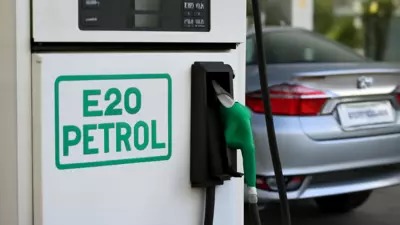
Follow WOWNEWS 24x7 on:

India’s ambitious push toward cleaner fuels has hit a speed bump. The nationwide rollout of E20 petrol—a blend of 20% ethanol and 80% gasoline—was hailed as a milestone in reducing carbon emissions and cutting oil imports. But just weeks after celebrating its early achievement of the E20 target, the government is facing a wave of backlash from vehicle owners across the country. From mileage drops to engine damage fears, the transition is proving far more turbulent than anticipated.
Here’s a comprehensive breakdown of the controversy:
1. What Is E20 and Why It Matters
- E20 petrol is part of India’s ethanol blending programme, aimed at reducing dependence on fossil fuels
- Ethanol is a biofuel derived from crops like sugarcane and corn, and burns cleaner than traditional petrol
- The government achieved its E20 rollout five years ahead of schedule, citing environmental and economic benefits
- Officials claim the initiative will reduce carbon emissions, support farmers, and lower the crude oil import bill
2. The Backlash Begins: Mileage Drops and Engine Woes
- Thousands of drivers have taken to social media to report a noticeable decline in fuel efficiency
- Some users claim their vehicles, especially older models, are delivering 20–40% less mileage after switching to E20
- A Volkswagen Vento owner reported a drop from 10 km/l to just 6 km/l after refueling with E20
- Car reviewers like Amit Khare and Sunderdeep Singh have criticized the fuel as dry and corrosive, warning of long-term damage to fuel lines and engine components
- Drivers are demanding transparency and the right to choose between fuel blends, especially for non-E20-compliant vehicles
3. Government’s Response: Defending the Blend
- The Ministry of Petroleum and Natural Gas has dismissed concerns as lacking technical foundation
- Officials admit a slight dip in mileage—1–2% in newer vehicles and up to 6% in older ones—but say this can be managed with regular servicing
- The ministry insists that E20 is safe and has undergone rigorous testing by the Automotive Research Association of India
- Union Minister Nitin Gadkari challenged critics to name a single car that has faced issues due to E20, calling the programme economically and environmentally sound
4. Compatibility Crisis: Not All Cars Are Ready
- Many vehicles on Indian roads are only compatible with E10 (10% ethanol blend), making E20 potentially harmful
- Experts warn that rubber components, fuel pumps, and injectors in older cars may degrade faster with E20
- The government has advised replacing certain parts every 20,000–30,000 km, but this adds to maintenance costs
- Critics argue that petrol stations should clearly label fuel blends and offer alternatives for legacy vehicles
5. Public Sentiment: Confusion and Distrust
- Consumers feel blindsided by the rollout, citing lack of awareness and poor communication
- Social media is flooded with complaints, memes, and calls for fuel choice
- Many accuse the government of prioritizing optics over user experience, especially for the middle class
- The backlash reflects broader concerns about how green transitions are implemented without adequate public engagement
6. What’s Next: Policy Tweaks or Pushback?
- The government may need to revisit its rollout strategy, especially around consumer education and vehicle compatibility
- Auto manufacturers could accelerate production of E20-ready models, but that leaves millions of existing vehicles in limbo
- Fuel stations may be pressured to offer multiple blends and clearer labeling to avoid confusion
- The E20 debate could shape future biofuel policies, balancing sustainability with practicality
Sources: The Economic Times, NDTV Auto, Hydrocarbon Processing, The New Indian Express.




